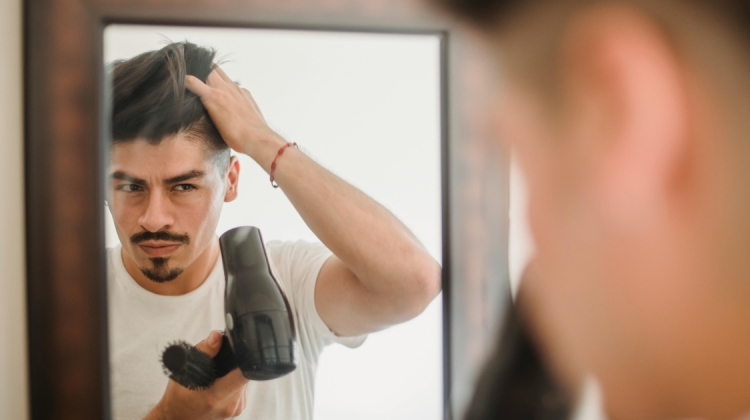
Healthy hair is built through habits. Between daily washing, styling, workouts, and exposure to sun or cold air, men’s hair takes more stress than most realize. Damage doesn’t always show up as split ends.
It can mean dryness, dullness, breakage, or a rough texture that won’t behave no matter what product you use for washing. Repairing that damage starts with understanding it. The goal isn’t a complicated routine but a consistent one.
Over time, these small steps add up to stronger, softer, more manageable hair that looks as healthy as it feels. Washing gently, conditioning with purpose, and protecting your hair before it’s exposed to heat or friction is key. Real repair relies on consistency.
Identify What’s Damaging Your Hair

Repair starts with awareness. Most men don’t realize how daily habits chip away at hair strength. Overwashing strips natural oils, while heat styling, chlorine, and UV exposure weaken strands over time. Even gym sweat, tight hats, or stress can dull texture and cause breakage.
Understanding the source of damage helps you target it effectively. That’s when product choice matters, especially when selecting the right hair mask.
Look for one designed to replenish moisture and restore protein balance without adding weight. It’s a small shift that makes a noticeable difference.
The goal isn’t to overhaul your routine, but to adjust it with intention. Cleanse less aggressively, protect more consistently, and your hair will start to regain its natural strength and shine.
Cleanse Smarter, Not Harsher
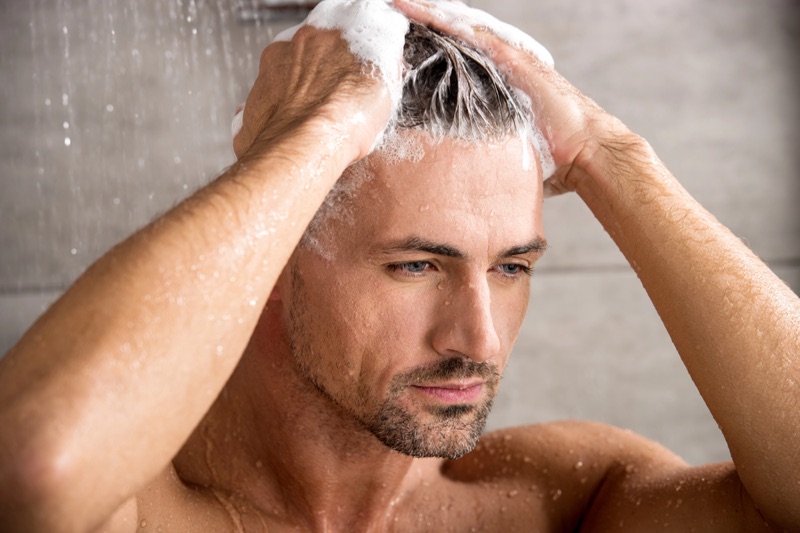
Healthy hair starts at the scalp. Washing too often or using harsh formulas can strip away the oils that keep strands balanced and strong. A gentle, sulfate-free shampoo is your best ally. Pick one that cleans without leaving hair feeling tight or dry.
Focus on the roots, where buildup collects, and let the lather rinse through the ends instead of scrubbing them directly. Water temperature matters, too. Hot showers might feel good, but they open the cuticle and lead to frizz or dullness.
Finish with a cool rinse to help seal moisture in. Over time, these small changes protect your scalp’s natural barrier and maintain a clean foundation for hydration, conditioning, and styling to actually work as intended.
Condition Like You Mean It
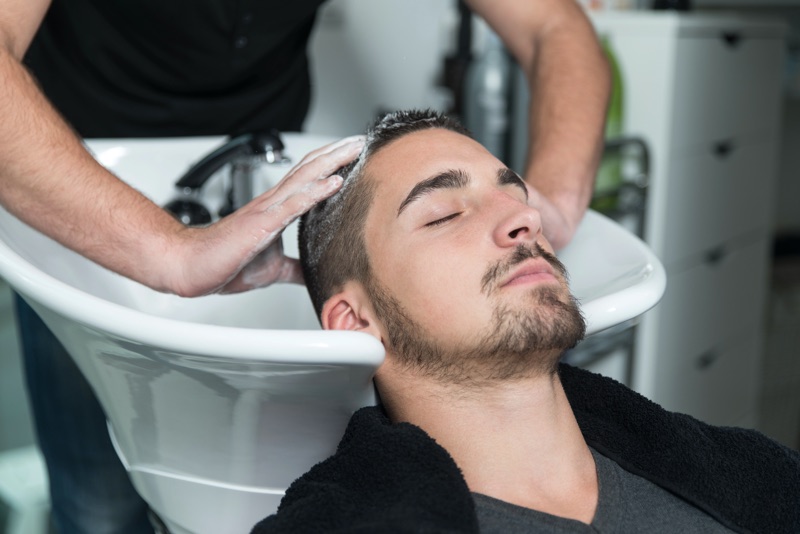
Conditioning isn’t optional. It’s the step that restores what shampoo takes away. A good conditioner smooths the cuticle, adds elasticity, and keeps strands resilient against heat and friction.
Focus on the mid-lengths and ends, where damage shows first, and leave it on for a couple of minutes to let the ingredients do their job. For most men, lightweight formulas with natural oils or keratin work best, adding moisture without heaviness.
If your hair tends to frizz or feel coarse, reach for something richer once or twice a week. Think of conditioner as reinforcement, not repair.
Used consistently, it transforms texture over time, keeping hair soft, manageable, and strong enough to handle whatever your routine demands.
The Power Move: Use a Hair Mask Once a Week
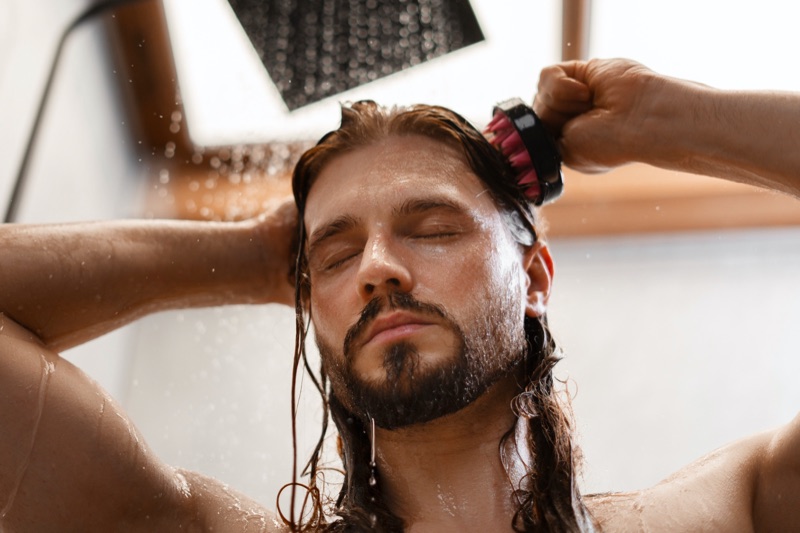
A hair mask is your weekly reset. It’s a deep treatment that takes your routine from maintenance to repair. Unlike regular conditioner, it works on a cellular level to rebuild strength, seal moisture, and smooth the surface of each strand.
The key is finding one that fits your hair type: lightweight hydration for fine hair, richer nourishment for thick or textured styles. Apply the mask after shampooing, focusing on mid-lengths and ends.
Rinse thoroughly, and you’ll notice immediate softness and lasting control. Used regularly, a mask prevents damage and keeps your hair looking healthy.
Protect Before You Style

Repairing damage means more than treating what’s already there. It’s about preventing what’s next. Every time you use a blow-dryer, straightener, or even a hot shower, your hair faces heat stress that weakens its structure.
A lightweight heat protectant spray creates a barrier, locking in moisture while reducing breakage and frizz. If your routine includes styling, start with protection first. Apply evenly to damp hair before any heat, and lower the temperature whenever possible.
For air-drying days, a leave-in cream or oil can add smoothness and defense against friction from hats or pillows. Prevention is simple but powerful.
When to Call in a Pro
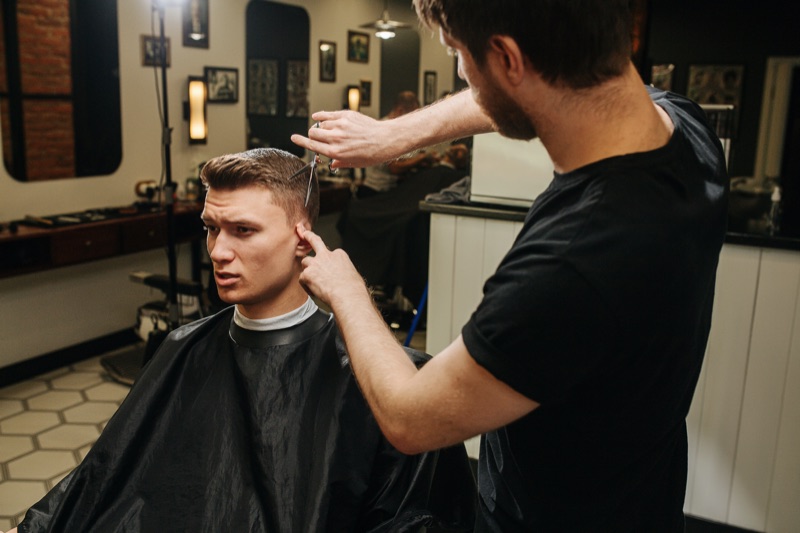
Sometimes, home care can only go so far. If your hair feels rough no matter what you use, or if you’re noticing thinning, breakage, or sudden texture changes, it’s time to see a professional.
A skilled barber or stylist can assess the type and level of damage, then recommend targeted treatments to rebuild strength and restore balance. In-salon deep-conditioning or protein therapies can revive hair that’s been pushed past its limit.
Regular trims also make a bigger difference than most men realize. Removing damaged ends helps maintain shape and prevents further fraying. Think of professional care as a reset button. It’s about giving your hair the expert attention it needs to stay healthy long-term.

